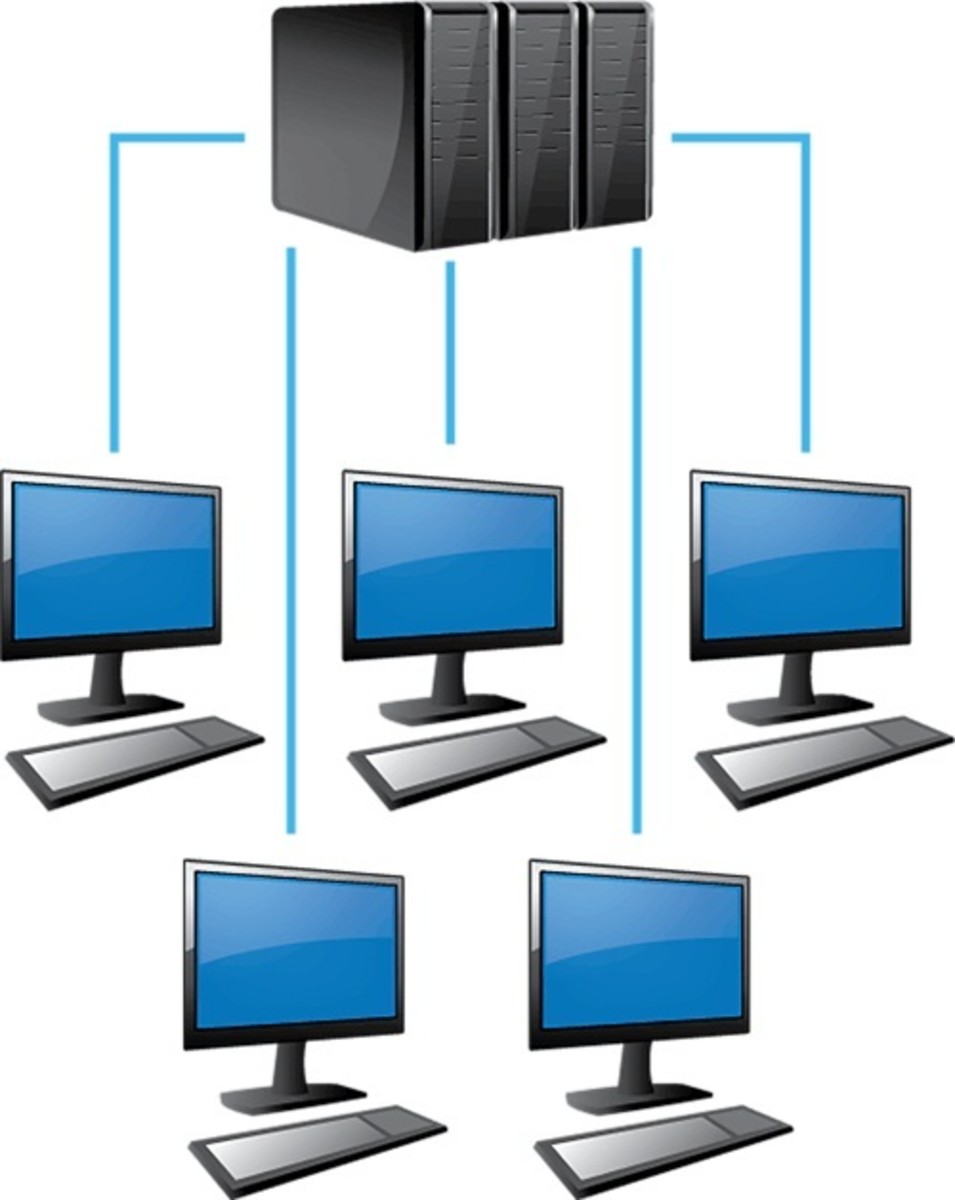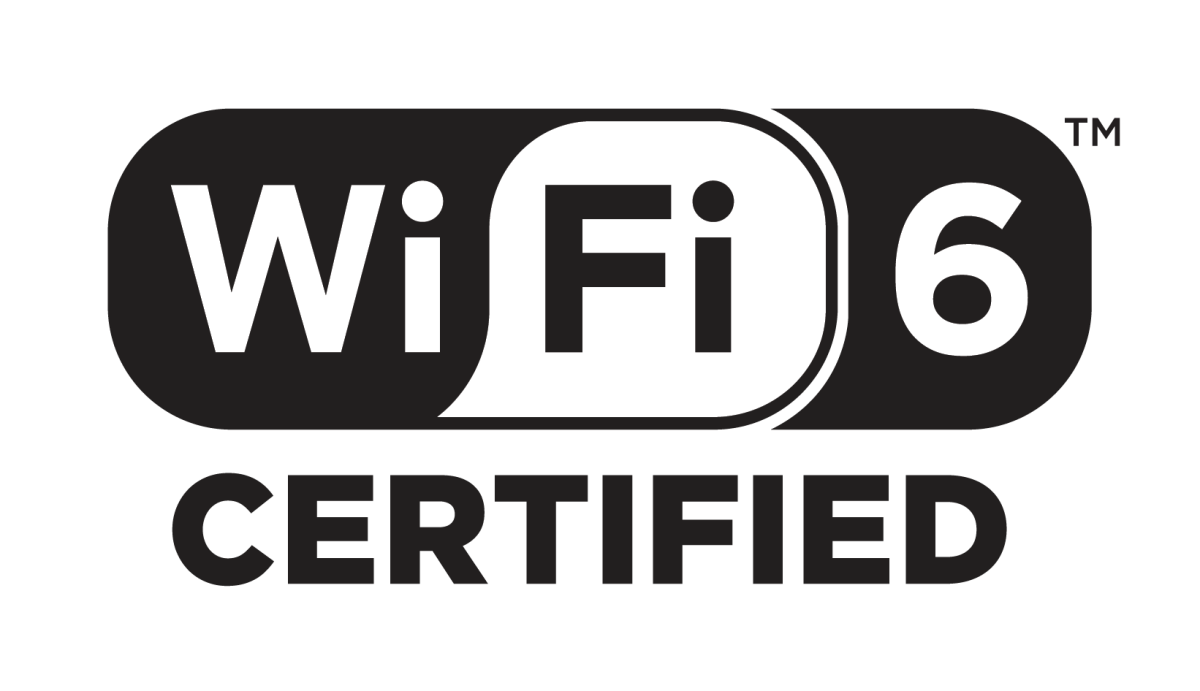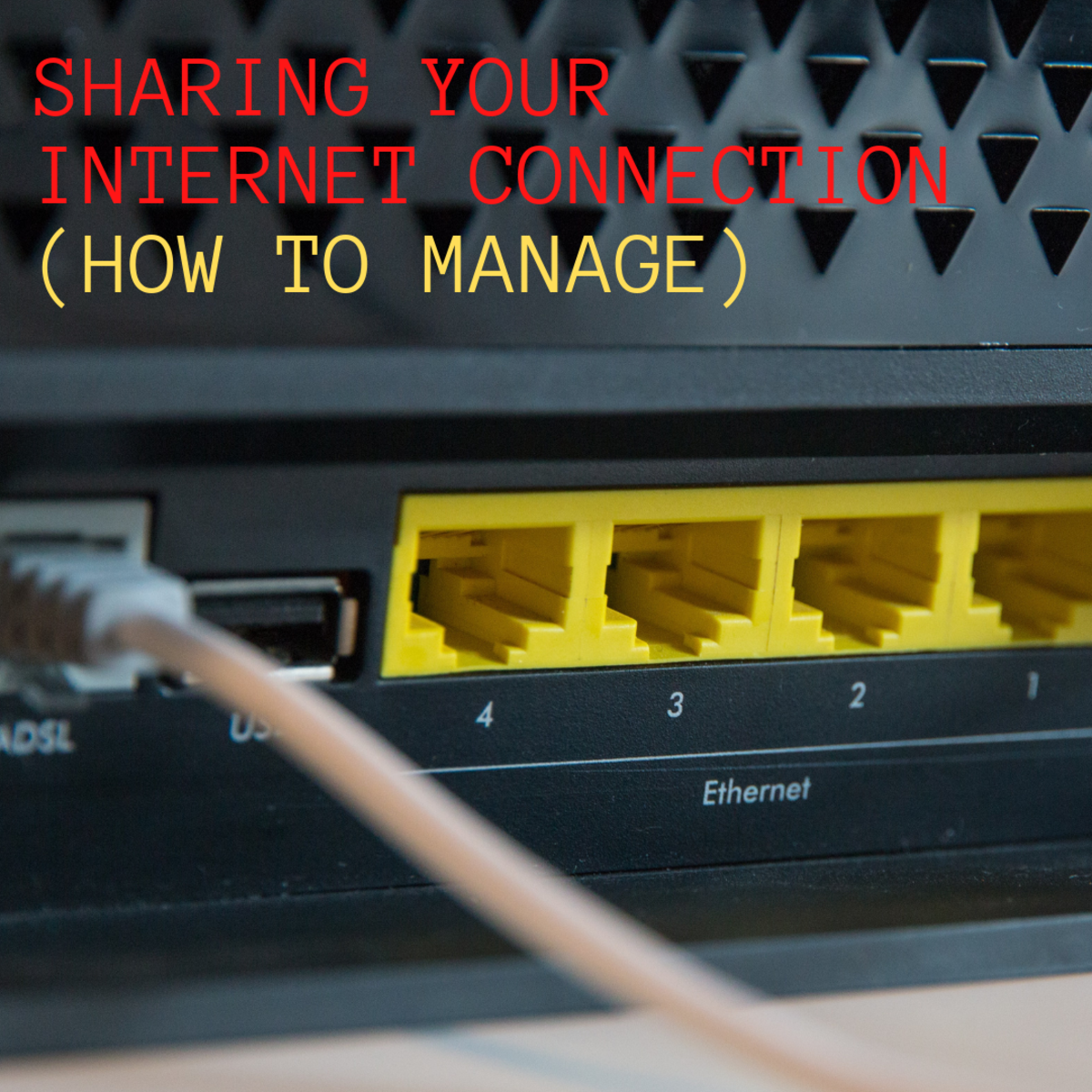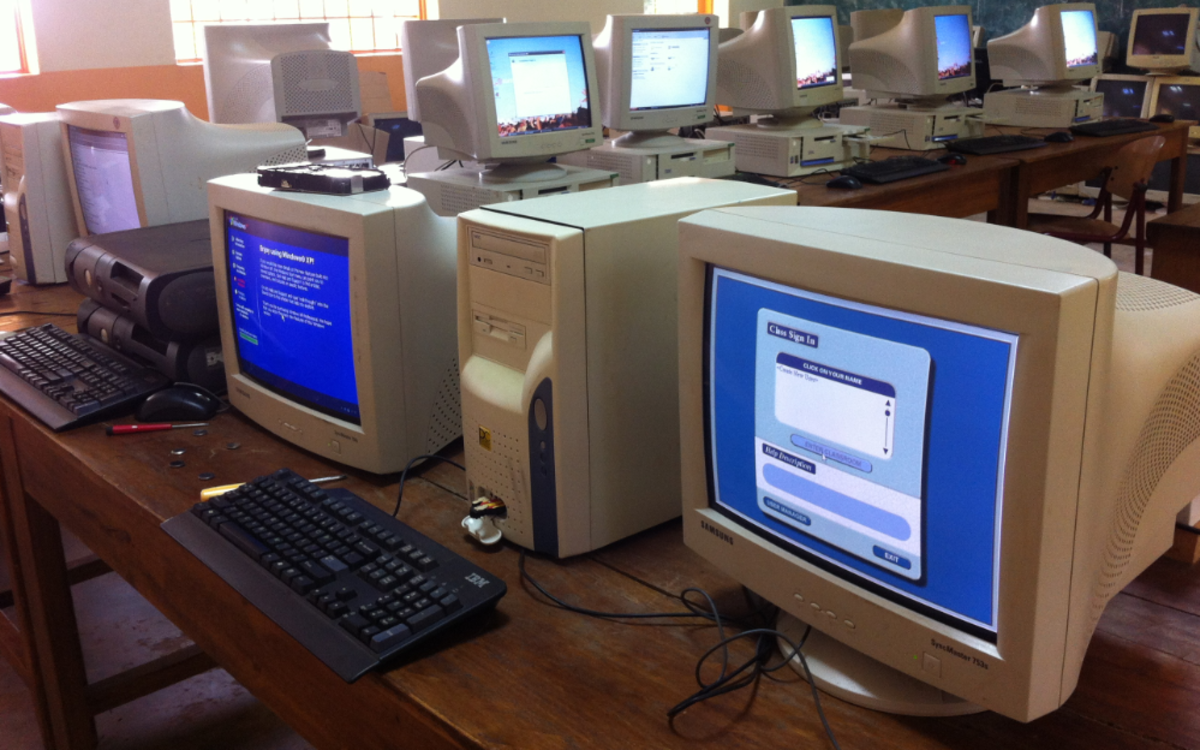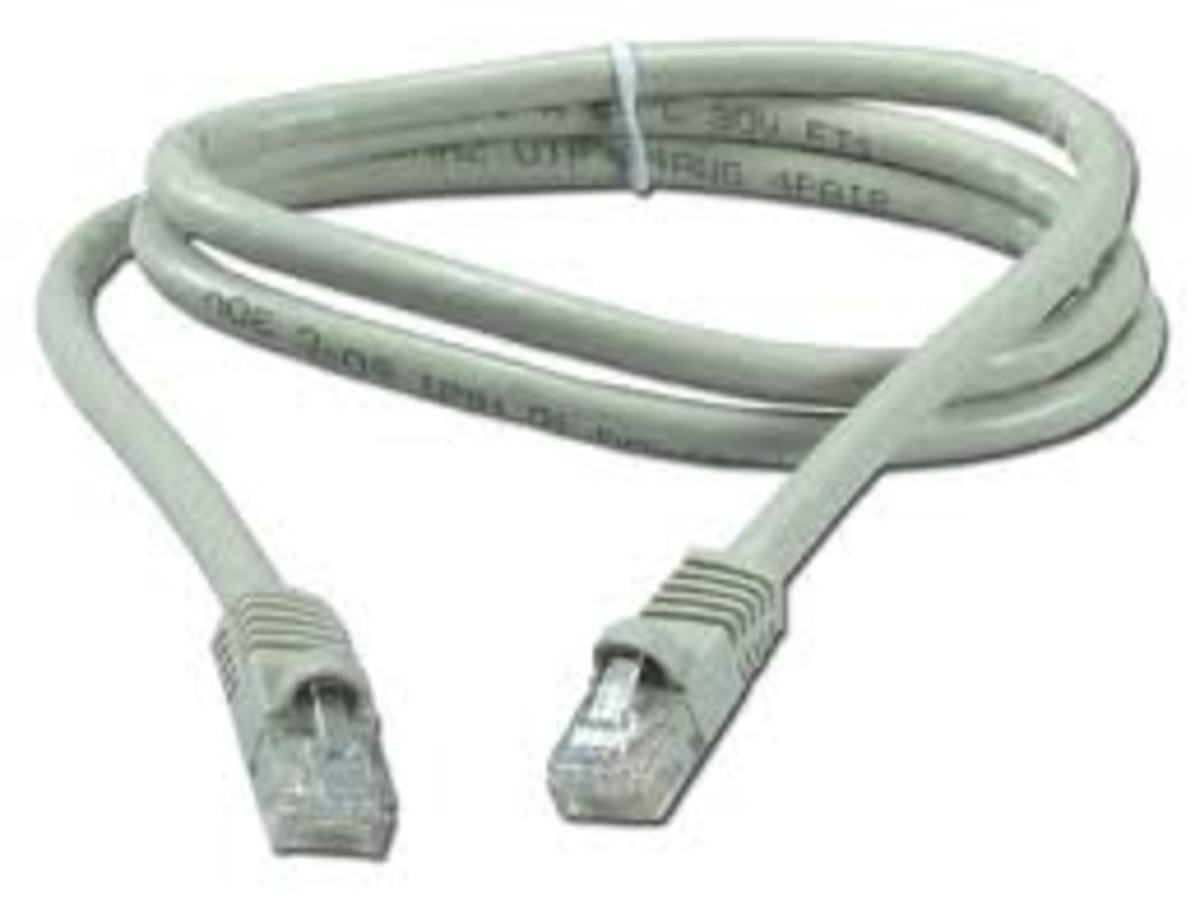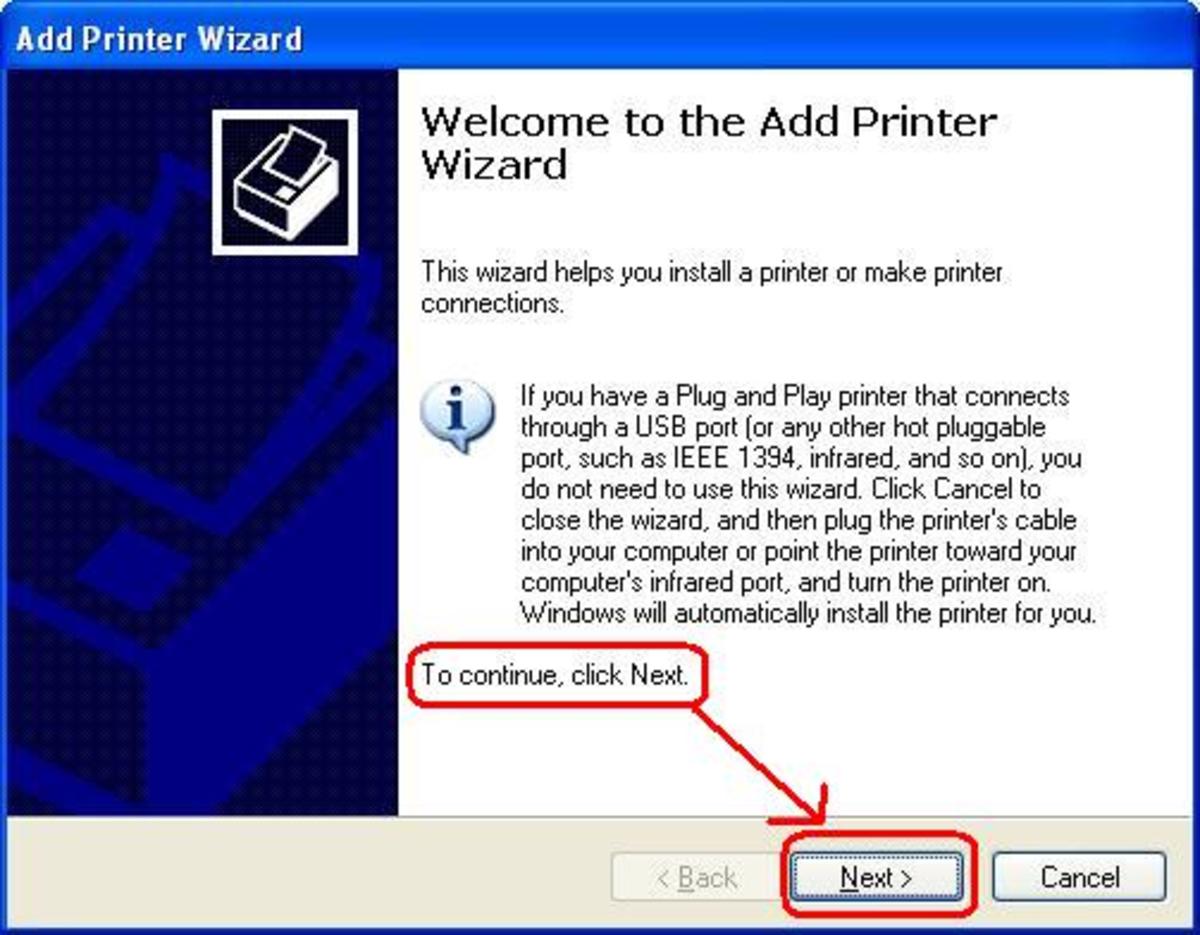SAN vs NAS technology summary
Digital World

SAN vs NAS
SAN / NAS Overview
Both Storage Area Networks (SANs) and Network Attached Storage (NAS) provide networked Enterprise Data Center storage solutions. Sometimes a NAS appliance is confused as a SAN in common conversation. But the fact is that a NAS is usually a stand-alone device.
A SAN commonly utilizes Fibre Channel interconnects (a Gigabit Enterprise Solution). A NAS typically makes Ethernet and TCP/IP connections, and is found more in a small to medium sized business.
While NAS may be present within the Enterprise or Data Center, it is not Scalable as is SAN. It tends to be a small business solution, or (within an Enterprise, department-level storage).
==================
A NAS- is a single storage device that operates on data files and has it's own IP address. The Hard drives are usually SATA drives. Often, a NAS has an embedded operating system (like XP) and / or, proprietary software.
NAS devices, typically are NOT "clustered" as SAN is, with something known as a "switch". A switch allows SAN devices to communicate and coordinate with each other through a complex protocol called Fibre Channel Protocol (FCP).
This does raise the issue of a Super-Duper version of something that is more like NAS's "big brother". Something also based upon fiber channel and referred to as JBOD. Or, Just a Bunch Of Disks. Often a JBOD is fibre-channel and IS an enterprise level solution, but, as it's name hints, it's just usually a non-redundant array of disks, and is usually configured for speed. Not for backup / redundancy.
A SAN- is a local network of multiple devices that operate on disk blocks, often using Fiber Channel (FC). Fiber Channel Protocol (FCP) is a transport protocol (similar to TCP used in IP networks) which predominantly transports SCSI commands over Fibre Channel networks.
(see iSCSI and Related Technology below)
Fiber Channel Fabric Switches
=================================
FC Fabric Switches are used with clustered SAN devices (called a Fabric) based upon Fiber Channel. Major manufacturers of Fibre Channel switches are: Brocade, Cisco Systems, and QLogic.
Cisco DS-C9216i-K9 MDS 9216i Multilayer Fabric Switch
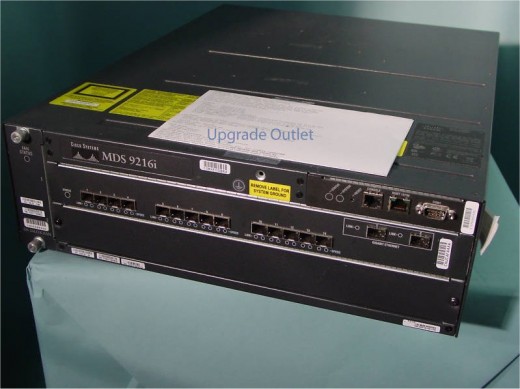
Brocade Silkworm Fabric Switch: IBM 2005-B32 & SAN32B-3 32 x Active 4Gb/s ports

Qlogic Sb5602q-08a SanBox 5602 Full Fabric Switch
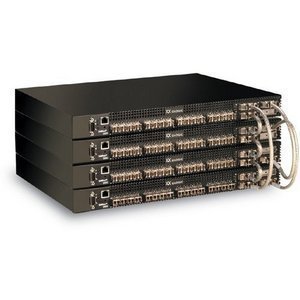
Cisco MDS 9000 Fabric Switch
A Fiber Channel SAN may require a Converged Network Adapter (CNA) Card. (see below for more HBA info) The exact kinds of network cards depends exactly upon the type of hardware being linked together. The hardware technology for fibre-channel is distinct from common networking, which is primarily ether-net, therefore it's in a class of it’s own. To buy such infrastructure is a future-oriented investment. For any company looking forward to continuous growth, or to expand the flexibility and scalability of it's service infrastructure.
======================
Converged Network Adapters (CNAs), are specialized network cards, which contain both a Fibre Channel Host Bus Adapter (HBA) and Ethernet Network Interface Card (NIC) functionality on the same adapter card.
SAN vs NAS Usage Model
======================
The administrator of a home or small business network can connect one NAS device to their LAN. The NAS maintains its own IP address comparable to computer and other TCP/IP devices. Using a software program that normally is provided together with the NAS hardware, a network administrator can set up automatic or manual backups and file copies between the NAS and all other connected devices. The NAS holds many gigabytes of data, up to a few terabytes. Administrators add more storage capacity to their network by installing additional NAS devices, although each NAS operates independently.
Administrators of larger enterprise networks may require many terabytes (peta or zeta-bytes) of centralized file storage or very high-speed file transfer operations. Where installing an army of many NAS devices is not a practical option, administrators can instead install a single SAN containing a high-performance disk array to provide the needed scalability and performance. Administrators require specialized knowledge and training to configure and maintain SANs.
SAN / NAS Convergence
=====================
As Internet technologies like TCP/IP and Ethernet have proliferated worldwide, some SAN products are making the transition from Fibre Channel to the same IP-based approach NAS uses. Also, with the rapid improvements in disk storage technology, today's NAS devices now offer capacities and performance that once were only possible with SAN. These two industry factors have led to a == partial convergence == of NAS and SAN approaches to network storage.
But the major differences are distinct.
Using a dragster analogy, a home-built dragster may be “very fast” and even Good, on common roads and have high performance attributes ...compared to common vehicles. But a TRUE Top-Fuel dragster is in an entirely different class, and built for one purpose… SAN represents maximum speed / performance / redundance / scalability options that NAS can never approach. The two technologies are entirely different, though there may be some overlap of ability.
===========================================================================
===========================================================================
Lacie 1TB Network Attached Storage (NAS) Server 300963 Etherdisk

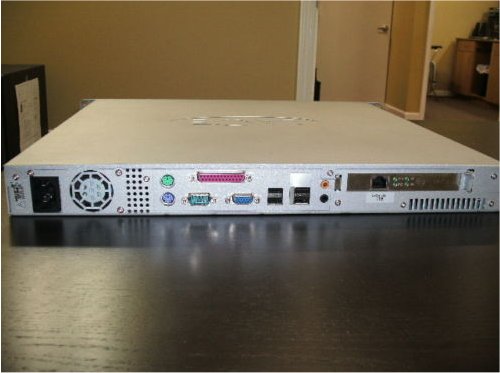
Iocell Netdisk USB eSATA NAS 352UN Enclosure NDAS Case 2 Bay
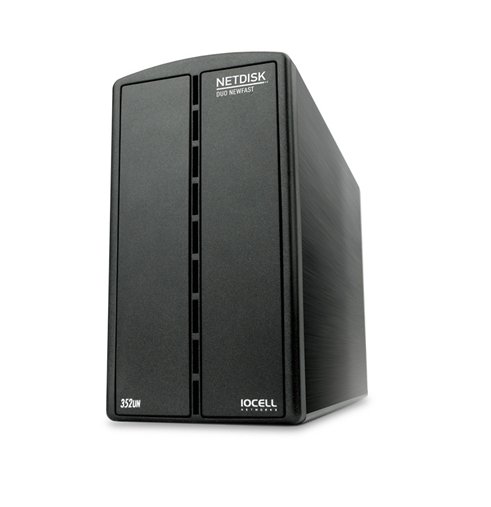
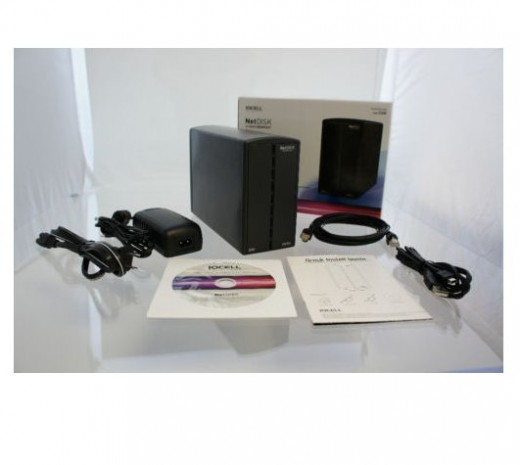
NAS - Detail
============
Definition: NAS allows files to be stored and retrieved across a computer network. A NAS includes a dedicated hardware device often called == "the head" == that connects to a local area network (usually via Ethernet). This NAS "server" authenticates clients and manages file operations in much the same manner as traditional file servers, through well-established network protocols like NFS and CIFS/SMB. (see Related Technology below)
NAS systems attempt to reduce the cost associated with traditional file servers. Rather than utilize general-purpose computer hardware and a full-featured network operating system (NOS) like NetWare, NAS devices generally run an embedded operating system (such as XP) on simplified hardware. NAS boxes support hard drives, and sometimes tape drives, but lack peripherals like a monitor or keyboard. Designed specifically for network storage, a NAS tends to be easier to manage than a file server.
The term "NAS" is often confused with the related term "SAN" (Storage Area Network). In a nutshell, NAS devices are just one type of entity that can exist on a SAN.
======================
==============================================================
EMC Clariion CX3-80 w/ 165 x 500gb disk 82tb SAN
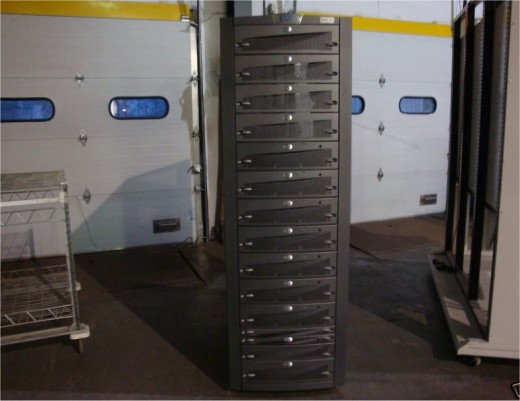
SAN - Detail
============
A storage area network (SAN) is a type of –scaleable- local area network (LAN) designed to handle large data transfers. A SAN typically supports data storage, retrieval and replication on business networks using high-end servers, multiple disk arrays and Fibre Channel interconnection technology. (Fiber Channel (FC) has its origins within super-computing)
SAN technology is similar but distinct from network attached storage (NAS) technology. While SANs traditionally employ low-level network protocols for transfering disk blocks, a NAS device typically works over TCP/IP and can be integrated fairly easily into home computer networks.
The term SAN can sometimes refer to system area networks instead of a storage area network. System area networks are clusters of high performance computers used for distributed processing applications requiring fast local network performance. Storage area networks, on the other, are designed specifically for data management.
Also Known As: Storage Area Network, System Area Network
HP StorageWorks Modular SAN Array 1000 MSA1000 201723-B22 w/ 2x 2/8 SAN Switch
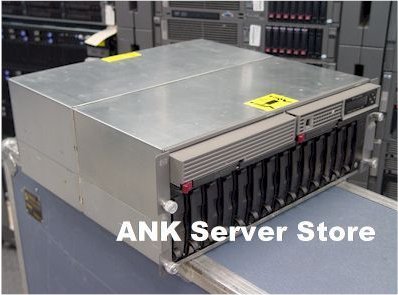
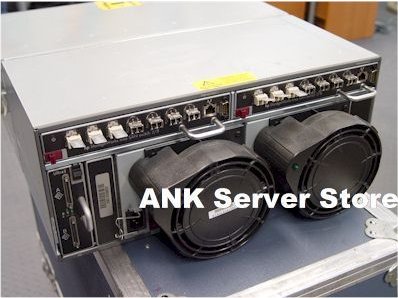
Related Technology
===================
CIFS
====
Short for Common Internet File System, a protocol that defines a standard for remote file access using millions of computers at a time. With CIFS, users with different platforms and computers can share files without having to install new software.
CIFS runs over TCP/IP but uses the SMB (Server Message Block) protocol found in Microsoft Windows for file and printer access; therefore, CIFS will allow == all applications ==, not just Web browsers, to open and share files across the Internet.
With CIFS, changes made to a file are simultaneously saved on both the client and server side.
SMB
===
Server Message Block: In computer networking, Server Message Block (SMB), also known as Common Internet File System (CIFS, /sfs/) operates as an application-layer network protocol[1] mainly used to provide shared access to files, printers, serial ports, and miscellaneous communications between nodes on a network. It also provides an authenticated inter-process communication mechanism. Most usage of SMB involves computers running Microsoft Windows, where it was known as "Microsoft Windows Network" before the subsequent introduction of Active Directory. Corresponding Windows services have names "server" (for a server part) and "workstation" (for a client part).
The Server Message Block protocol can run atop the Session (and inferior) network layers in several ways:
directly over TCP, port 445;
via the NetBIOS API, which in turn can run on several transports:
on UDP ports 137, 138 & TCP ports 137, 139 — see NetBIOS over TCP/IP;
on several legacy protocols such as NBF (incorrectly referred as NetBEUI).
Network THE WORLD: Cisco
Why Fibre-over-Ethernet is a "good" thing (tongue in cheek)
Real World Networking can be messy OR neat
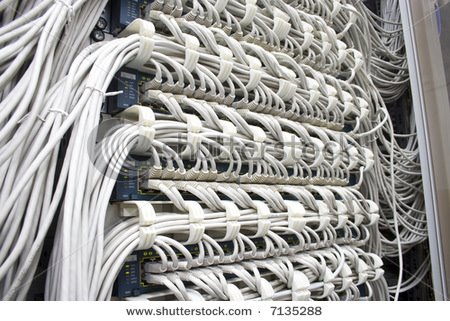
Fiber Channel
==============
FC, is a gigabit-speed network technology primarily used for storage networking. Fibre Channel is standardized in the T11 Technical Committee of the InterNational Committee for Information Technology Standards (INCITS), an American National Standards Institute (ANSI)–accredited standards committee. Fibre Channel was primarily used in the supercomputer field, but now, has become the standard connection type for storage area networks (SAN) in enterprise storage.
Despite its name, Fibre Channel signaling can run on both twisted pair copper wire and fiber-optic cables.
Fiber Channel over IP
=====================
(see also IP over FC -not detailed here-)
Fibre Channel over IP (FCIP or FC/IP, also known as Fibre Channel tunneling or storage tunneling), is an Internet Protocol (IP) was created by the Internet Engineering Task Force (IETF) as storage technology.
An FCIP Entity functions to forward Fibre Channel frames after encapsulating them and viewed from an IP Network perspective, these entities are peers that communicate using TCP/IP.
The main advantage of FCIP is that it overcomes the distance limitations of native Fibre Channel, and its ability to enable geographically distributed devices to be linked using the existing IP infrastructure, while keeping fabric services intact.
Fibre Channel over IP (FCIP or FC/IP, also known as Fibre Channel tunneling or storage tunneling), is an Internet Protocol (IP) was created by the Internet Engineering Task Force (IETF) as storage technology.
An FCIP Entity functions to forward Fibre Channel frames after encapsulating them and viewed from an IP Network perspective, these entities are peers that communicate using TCP/IP.
The main advantage of FCIP is that it overcomes the distance limitations of native Fibre Channel, and its ability to enable geographically distributed devices to be linked using the existing IP infrastructure, while keeping fabric services intact.
HBA cards
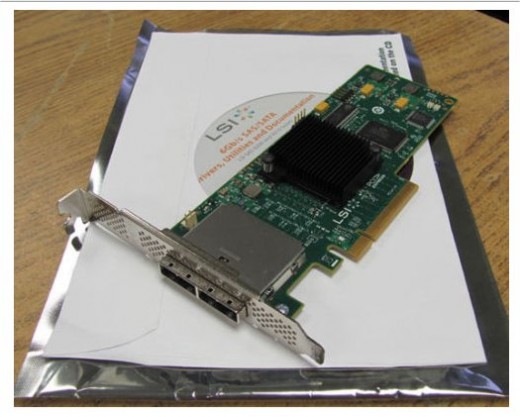
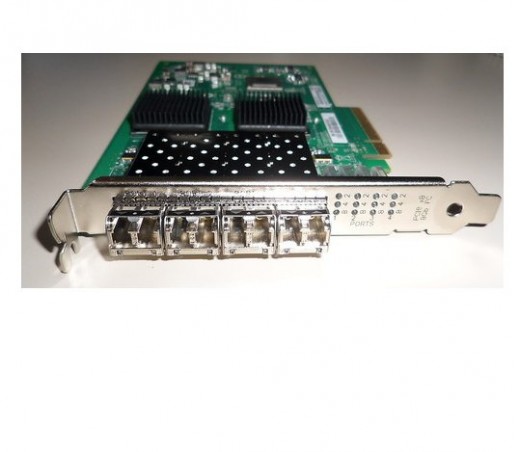
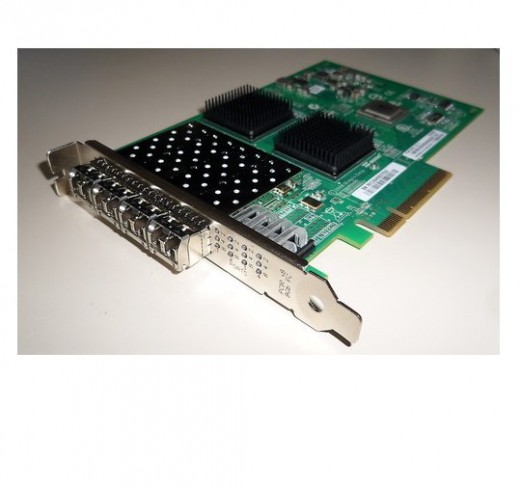
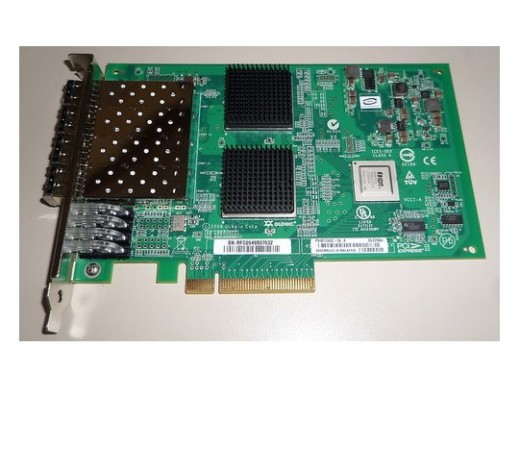
Fibre Channel over Ethernet
============================
(FCoE) is an encapsulation of Fibre Channel frames over Ethernet networks. This allows Fibre Channel to use 10 Gigabit Ethernet networks (or higher speeds) while preserving the Fibre Channel protocol. The specification, supported by a large number of network and storage vendors, is part of the International Committee for Information Technology Standards T11 FC-BB-5 standard.
Functionality
=============
FCoE maps Fibre Channel directly over Ethernet while being independent of the Ethernet forwarding scheme. The FCoE protocol specification replaces the FC0 and FC1 layers of the Fibre Channel stack with Ethernet. By retaining the native Fibre Channel constructs, FCoE was meant to integrate with existing Fibre Channel networks and management software.
Many data centers use Ethernet for TCP/IP networks and Fibre Channel for storage area networks (SANs). With FCoE, Fibre Channel becomes another network protocol running on Ethernet, alongside traditional Internet Protocol (IP) traffic. FCoE operates directly above Ethernet in the network protocol stack, in contrast to iSCSI which runs on top of TCP and IP.
As a consequence, == FCoE is not routable at the IP layer==, and will not work across routed IP networks.
Since classical Ethernet had no priority-based flow control, unlike Fibre Channel, FCoE requires enhancements to the Ethernet standard to support a priority-based flow control mechanism (this prevents frame loss). The IEEE standards body is working on this in the Data Center Bridging Task Group.
Fibre Channel required three primary extensions to deliver the capabilities of Fibre Channel over Ethernet networks:
Encapsulation of native Fibre Channel frames into Ethernet Frames.
Extensions to the Ethernet protocol itself to enable an Ethernet fabric in which frames are not routinely lost during periods of congestion.
Mapping between Fibre Channel N_port IDs (aka FCIDs) and Ethernet MAC addresses.
"Converged" network adapter
Computers connect to FCoE with Converged Network Adapters (CNAs), which contain both Fibre Channel Host Bus Adapter (HBA) and Ethernet Network Interface Card (NIC) functionality on the same adapter card. CNAs have one or more physical Ethernet ports. FCoE encapsulation can be done in software with a conventional Ethernet network interface card, however FCoE CNAs offload (from the CPU) the low level frame processing and SCSI protocol functions traditionally performed by Fibre Channel host bus adapters.
HBA's
=====
Host Bus Adapters
==================
In computer hardware, a host controller, host adapter, or host bus adapter (HBA) connects a host system (the computer) to other network and storage devices. The terms are primarily used to refer to devices for connecting SCSI, Fibre Channel and eSATA devices, but devices for connecting to IDE, Ethernet, FireWire, USB and other systems may also be called host adapters. Recently, the advent of iSCSI and Fibre Channel over Ethernet has brought about Ethernet HBAs, which are different from Ethernet NICs in that they include TCP Offload Engines. There are also converged HBAs that support both Ethernet and Fibre Channel called Converged Network Adapters (CNAs).
iSCSI
=====
In computing, iSCSI (Listeni/a?'sk?zi/ eye-skuz-ee), is an abbreviation of Internet Small Computer System Interface, an Internet Protocol (IP)-based storage networking standard for linking data storage facilities. By carrying SCSI commands over IP networks, iSCSI is used to facilitate data transfers over intranets and to manage storage over long distances. iSCSI can be used to transmit data over local area networks (LANs), wide area networks (WANs), or the Internet and can enable location-independent data storage and retrieval. The protocol allows clients (called initiators) to send SCSI commands (CDBs) to SCSI storage devices (targets) on remote servers. It is a Storage Area Network (SAN) protocol, allowing organizations to consolidate storage into data center storage arrays while providing hosts (such as database and web servers) with the == illusion == of locally-attached disks.
Unlike traditional Fibre Channel, which requires special-purpose cabling, iSCSI can be run over long distances using existing network infrastructure.
The idea is to keep things neat and controllable
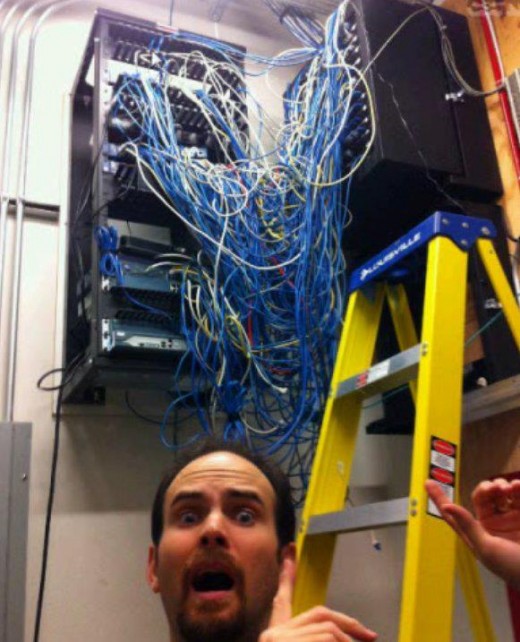
Fiber Channel Fabric Switch
============================
In the computer storage field, a Fibre Channel switch is a network switch compatible with the Fibre Channel (FC) protocol. It allows the creation of a Fibre Channel fabric, that is currently the core component of most storage area networks (SAN). The fabric is a network of Fibre Channel devices which allows many-to-many communication, device name lookup, security, and redundancy. FC switches implement zoning, a mechanism that disables unwanted traffic between certain fabric nodes. (as a switch is supposed to do)
A Fibre Channel director is, by current convention, a switch with at least 128 ports. It does not differ from a switch in core FC protocol functionality. The term itself initially soaked from old ESCON technology.
Fiber Channel switches may be deployed one at a time or in larger multi-switch configurations. SAN administrators typically add new switches as their server and storage needs grow, connecting switches together via fiber optic cable using the standard device ports. Some switch vendors now offer dedicated high-speed stacking ports to handle inter-switch connections (similar to existing stackable Ethernet switches), allowing high-performance multi-switch configurations to be created using fewer switches overall.
Major manufacturers of Fibre Channel switches are: Brocade, Cisco Systems, and QLogic.
===============
=======
==

